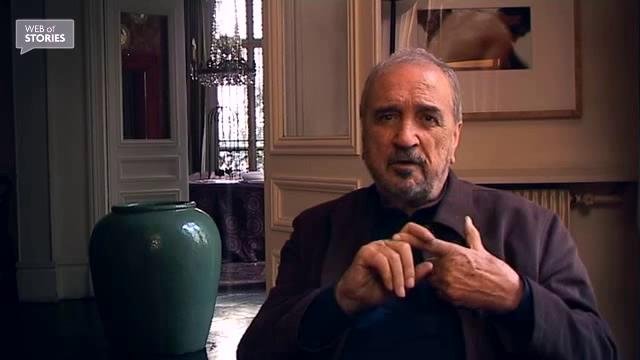NEXT STORY

My rural roots
RELATED STORIES

NEXT STORY

My rural roots
RELATED STORIES


|
Views | Duration | |
|---|---|---|---|
| 1. A house with a history | 1 | 981 | 01:13 |
| 2. My rural roots | 288 | 02:07 | |
| 3. My birthday tree | 2 | 238 | 00:58 |
| 4. Books of my childhood | 259 | 01:35 | |
| 5. Pictures that shaped my image of the world | 253 | 01:37 | |
| 6. First films | 216 | 02:12 | |
| 7. My first real book | 193 | 00:43 | |
| 8. Nurturing my flair for learning | 175 | 01:45 | |
| 9. Growing up in the country | 134 | 01:31 | |
| 10. An inspirational history teacher | 1 | 145 | 03:52 |

Nous sommes dans une maison, en plein Paris, tout près de Pigalle, dans les quartiers chauds. Et cette maison a été un cercle… c’est à dire un cercle de jeux… ici dans cette salle il y avait la roulette et dans les étages un bordel… une maison de dames. C’est un endroit où Toulouse-Lautrec a peint, où Stefan Zweig a vécu, la maison date de la fin du XIXe siècle et est restée une maison de jeux jusqu’en 1931. Moi, j’ai eu de la chance de l’acheter, il y a déjà 35 ans et, elle était en très mauvais état, à un monsieur qui était tapissier en meubles et qui avait ici un atelier. Donc la maison est chargée d’histoire, de l’autre côté de la rue il y avait un cabaret, très célèbre, qui s’appelait Le Chat Noir et on peut penser que tous les artistes qui se produisaient là-bas venaient le soir ici, dépenser ou jouer leurs cachets. Alors, c’est une maison qui a quatre niveaux, qui est grande, qui est très agréable à vivre, qui est à l’intérieur sur des jardins et que j’occupe depuis 36 ans.
We are in a house right in the middle of Paris, close to Pigalle, in the red-light district. This house used to be a ‘circle’… I mean ‘a gaming house’, and here, in this very room, there used to be a roulette table, and upstairs a brothel... a ladies’ house. It is the house where Toulouse-Lautrec painted, where Stefan Zweig lived. The house dates back to the end of the 19th century and was used as a gaming house until about 1931. I was lucky enough to buy it 35 years ago - and it was already in a terrible state - from a guy who was a furniture upholster and who had his workshop here. So it is a house full of history, and on the other side of the street there was a notorious cabaret called ‘Le Chat Noir’, and you can think that all the performers from over there were coming here at night, spending or betting their pay. It is a house spread over four levels, large, nice to live in, with some inner gardens, and I’ve been living here for 36 years.
French screenwriter Jean-Claude Carrière (1931-2021) began his association with films aged 24 when he was selected by Jacques Tati to write for him. This early experience led to further contact with other film-makers, including Luis Buñuel with whom Carrière collaborated for many years. He wrote screenplays for films including Belle de Jour, The Discreet Charms of the Bourgeoisie, Tin Drum and Danton.
Title: A house with a history
Listeners: Andrzej Wolski
Film director and documentary maker, Andrzej Wolski has made around 40 films since 1982 for French television, the BBC, TVP and other TV networks. He specializes in portraits and in historical films. Films that he has directed or written the screenplay for include Kultura, which he co-directed with Agnieszka Holland, and KOR which presents the history of the Worker’s Defence Committee as told by its members. Andrzej Wolski has received many awards for his work, including the UNESCO Grand Prix at the Festival du Film d’Art.
Tags: Le Chat Noir, 1931, Paris, Henri de Toulouse-Lautrec, Stefan Zweig
Duration: 1 minute, 13 seconds
Date story recorded: January 2010
Date story went live: 26 July 2010